How To Prepare Potting Soil For Tomatoes — 7 Simple Steps
-
Ed Malaker
- Last updated:
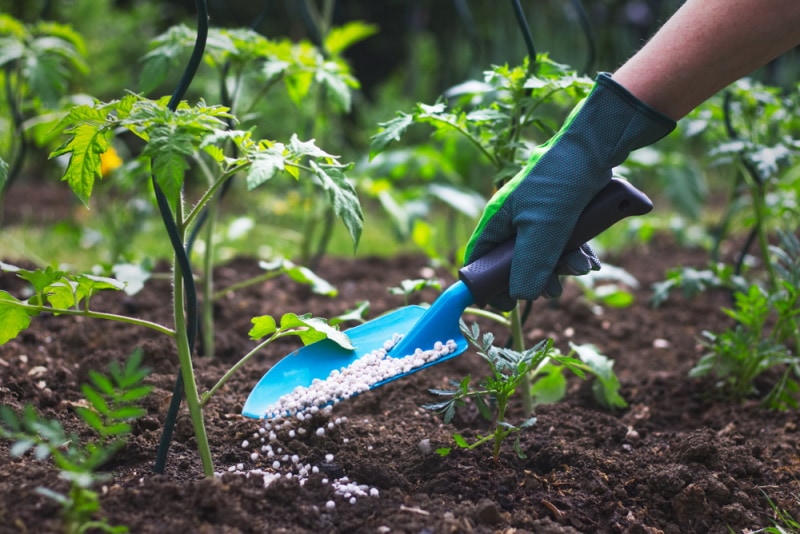
Tomatoes are one of the most popular vegetables to grow in the garden and in pots. However, many people struggle with producing a good harvest indoors and getting the potting soil correct. If this sounds like your situation, keep reading while we walk you through the process of preparing potting soil for tomatoes. We’ll show you how to create potting soil perfect for tomatoes. We’ll also cover a few other tips and tricks to help you harvest the most tomatoes.
Before You Begin
Before you start creating your potting soil for tomatoes, we recommend getting your tools and supplies together so you can finish it in one go. You will need a large bucket or pail to hold the soil, some gardening gloves to protect your skin, and a small shovel to help you mix. You will also need sphagnum peat moss, vermiculite, limestone, and garden soil in equal amounts, a soil testing kit, and possibly some limestone.
- Gardening gloves
- Shovel or trowel
- Large pail or bucket
- Sphagnum peat moss
- Vermiculite
- Garden soil
- Soil test kit
- Lime or ammonium nitrate
The 7 Steps on How to Prepare Potting Soil for Tomatoes
1. Start with the Garden Soil
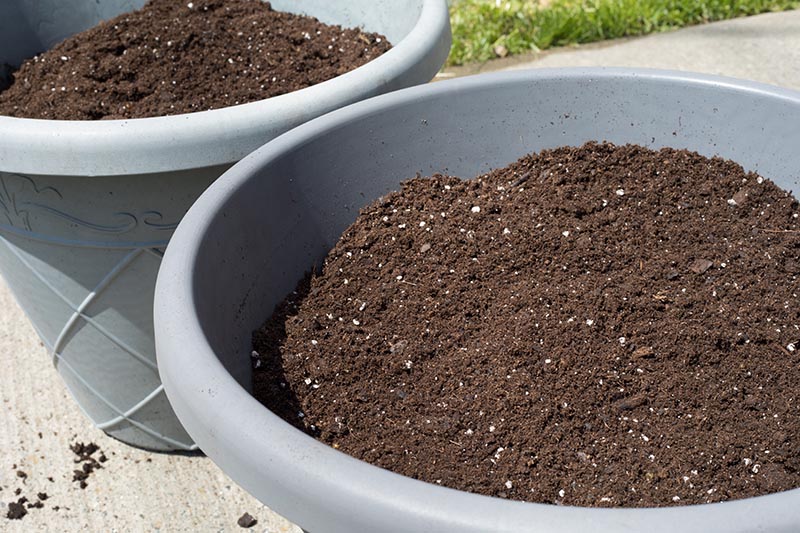
We recommend adding your garden soil to a large bucket or pail in the first step. Wear your gardening gloves and break up the soil, so there are no clumped-up pieces, and remove any large rocks.
2. Mix In the Sphagnum Peat Moss
Mix in the Sphagnum peat moss until it is blended with the soil with no large clumps of either material. The soil should feel light and airy, which will help the roots grow faster and allows them to absorb more nutrients.
3. Add In Vermiculite
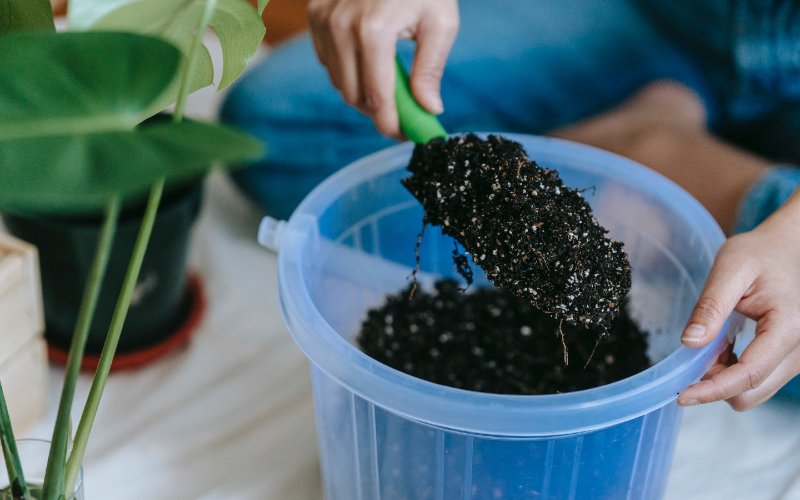
In the next step, we will mix in vermiculite. Since this is a harder mineral, it can be easier to get a good mix using a trowel or a small shovel. As in the last step, it’s important to get the mix even with no clumps of any single ingredient. The vermiculite will help aerate the soil, encourage root growth, and allow water to pass through the soil more easily, so there is less risk of root rot or soil compaction.
4. Test the Soil
Now that we have all of the ingredients in the pail mixed evenly, we will test the soil. Use a soil testing kit to check the pH of the soil. Tomatoes like slightly acidic soil, so you want a reading between 6.0 and 6.8. Some soil test kits will also let you send in a soil sample, and they will return a result that informs you if you need to add fertilizer.
5. Adjust the Soil
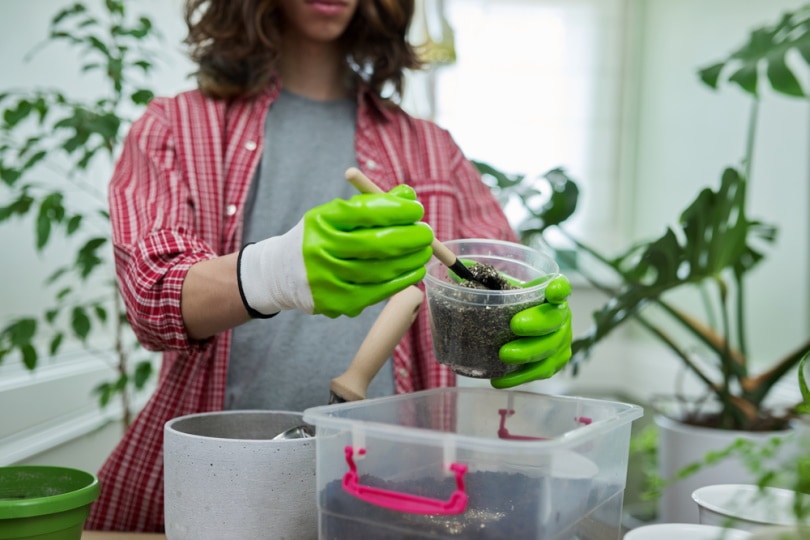
If you test the soil and the pH is wrong, you can add lime to make it more acidic or basic. Add lime to increase the pH of your soil and ammonium nitrate to decrease it. Only add a small amount of the ingredients before mixing, and test it again until you get a reading that falls within limits. Luckily Sphagnum peat moss is slightly acidic, so you shouldn’t need to adjust the pH unless the garden soil is way off.
6. Prepare Your Pots
Add several small rocks and organic materials like dead leaves and grass clippings. The pebbles will allow the water to drain away quickly so it doesn’t sit at the bottom of the pot, and the organic material will break down over time, adding essential nutrients to the soil.
7. Fill Your Pots
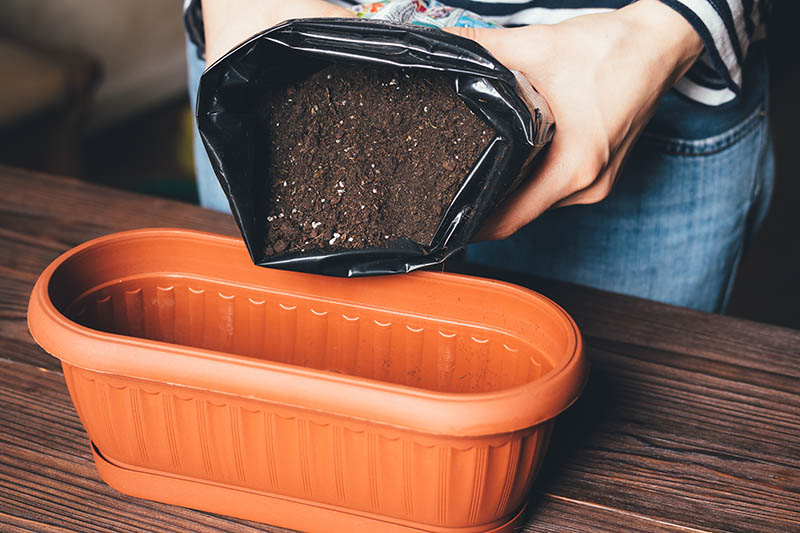
Once you attain the correct pH reading, your tomato potting soil is ready to use. Scoop the potting soil into your pots carefully, so you don’t compress it accidentally. If you have any left, place a cover over the bucket and store it out of the sunlight.
What Else Can I Add to My Potting Soil for Tomatoes?
- If your tomato plants keep drying out before you can water them, adding perlite to the soil can help them retain water longer without causing the ground to become soggy.
- If the soil comes out too acidic, and you don’t want to add lime, coconut coir is an excellent substitute for sphagnum peat moss and has a neutral pH.
- Your soil isn’t the only thing that your plant needs. It also requires plenty of sunlight. When you plant your indoor tomatoes, ensure you position them in front of the window so they get at least 6 hours of sunlight daily.
- Purchase a high-quality fertilizer and follow the instructions carefully to receive a larger harvest. It will require different nutrients at different growth stages, so you must adjust accordingly.
Summary
Creating potting soil for tomatoes is not difficult. Tomatoes like loamy, well-draining soil, and you can make it easily using sphagnum peat moss, vermiculite, and ordinary garden soil. Adding small pebbles and organic materials like dead leaves and grass clipping can help prevent water from building up on the bottom of the pot and will help add nutrients to the soil. Good fertilizer and placing the tomato plant in plenty of sunlight will also help encourage a bountiful harvest.
Featured Image Credit: encierro, Shutterstock
Contents
